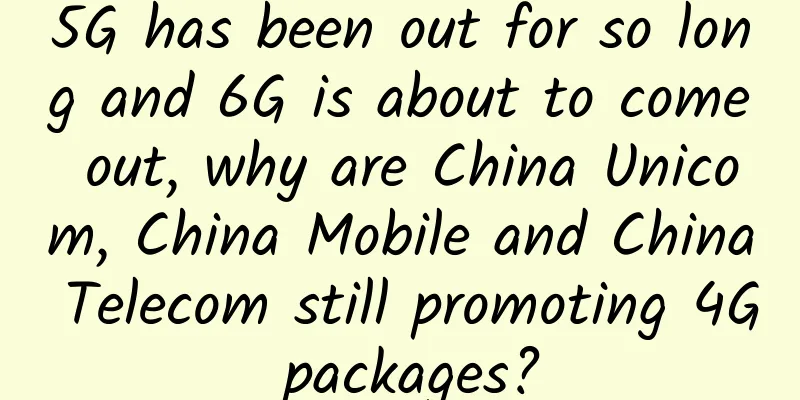How to jointly build and share 5G networks?

|
This article is reprinted from the WeChat public account "Wireless Deep Sea", the author is Fei Caicai. Please contact the Wireless Deep Sea public account to reprint this article. Recently, China Radio and Television and China Mobile signed a 5G network co-construction and sharing agreement, and the construction method of the 700M "golden frequency band" was finally settled. More than a year ago, China Telecom and China Unicom decided to jointly build and share 5G and jointly build a 3.5GHz network to give full play to the advantages of both parties' large bandwidth in this frequency band. So far, China's four operators have formed two major camps in 5G network construction. China Telecom and China Unicom have 200M bandwidth at the mid-frequency 3.5GHz, plus 45M bandwidth at 2.1G; China Mobile and China Broadcasting Corporation have 30M bandwidth at 700MHz, as well as 160M bandwidth at 2.6GHz and 160M bandwidth at 4.9GHz, with a full range of high, medium and low frequencies. In the following article, I will analyze the principles behind co-construction and sharing. 01What is network sharing? 02How to implement network sharing Depending on the degree of sharing, network sharing is divided into the following five types: roaming, site sharing, MORAN, MOCN and GWCN. The first one: roaming In this way, an operator has no physical network at all. The cells, base stations, and core networks are all rented from others. It only needs to build user management and business platforms. Although this method does not require the effort of building a network and can quickly carry out business with the help of other people's mature networks, the priority of resource use is inevitably low, and there is no network autonomy. Therefore, roaming is usually only a stopgap measure, and building your own network is the only option to control your destiny, even if it is jointly built and shared. The second type: site sharing In this way, the two operators only share the physical site, including: computer room, tower, power supply, antenna and feeder system and other systems. In China, this part of the infrastructure is provided by China Tower Corporation, which then provides it to the three major operators. In other words, site sharing is supported by default. This is the significance of China Tower's existence: sharing resources and reducing duplicate investment. The third type: MORAN (Multi-Operator Radio Access Network) This type of sharing goes one step further than site sharing, as it also shares the main equipment of the wireless access network, the base station. Although it is shared, the degree is not complete. Only the modules inside the base station that are not related to wireless access resources are shared, while the most critical parts: cells and frequencies, are still used by each party and each party does its own thing. Therefore, for mobile phones, the performance of MORAN is the same as that of no sharing. Since the cells of each operator are independent, they each send their own PLMN code in their own cell broadcasts, and the mobile phone can access its own network. Therefore, the implementation of MORAN is relatively simple and does not require additional standardization by the standards-setting organization 3GPP. Fourth: MOCN (Multi-Operator Core Network) This type of sharing is one step closer to MORAN, as it not only shares the main equipment of the wireless access network, the base station hardware itself, but also shares the most critical modules related to wireless access resources inside the base station: cells and frequencies. In other words, multiple network sharing operators will share cells and spectrum. So who does this cell belong to? To do this, the PLMN codes of all participating operators need to be sent in the cell broadcast, and the mobile phone can access the PLMN of its own service network. This process involves information exchange between the cell and the mobile phone, so 3GPP needs to standardize it. At the same time, the base station side also has to do a lot of work: How to allocate resources among operators in the same cell? Who has a higher priority? How to deal with congestion? This requires multi-party negotiation to determine, which is a relatively complicated process. As shown in the figure above, there are generally four strategies for allocating air interface wireless resources: static allocation, semi-static allocation, resource pool, and overbooking. Static allocation: Shared operators allocate resources in a fixed ratio, for example, operator A accounts for 60% and operator B accounts for 20%. What if operator B's network is congested, but operator A still has idle resources? Sorry, that's how resources are allocated. If there is congestion, you can't use other people's resources. It's that simple and crude. Semi-static allocation: There are only so many resources in total, so a portion is allocated as shared resources, and the rest is allocated according to a fixed ratio. For example, operator A and operator B each get 40% of the resources, and the remaining 20% is shared. Whoever has more services will occupy the resources first. Semi-static allocation is more flexible than static allocation. Resource pool: All operators share resources completely without reservation. Resources are allocated based on the volume of business, on a first-come, first-served basis, and released after use. Although this method is flexible, fairness must be fully considered in actual allocation to avoid a situation where one operator starves to death and another one dies from overeating. Overbooking: This allocation method is based on fixed allocation. Let's revisit this question: What if operator B's network is congested, but operator A still has idle resources? This problem is unsolvable under the fixed allocation method. So let's make a workaround. Since operator A still has some spare resources, why not let operator B use them temporarily? Isn't that good for everyone? In other words, although a section of resources is allocated in a fixed manner, it can be temporarily lent to others when free, and you can take it back at any time when you need it. The fifth type: GWCN (Gateway Core Network) This type of sharing goes one step further than MOCN. It not only shares the main equipment of the wireless access network - base station hardware and the most critical modules related to wireless access resources: cells and frequencies, but also some network elements of the core network. For the wireless side, GWCN behaves the same as MOCN, and both need to consider the resource allocation and management issues within the base station. For the core network, the shared network elements also need to consider the capacity allocation. In addition, the HSS, which is used for user management, is the core of the core network and is not shared. The high-level service platform has different services for specific operators and is not shared either. For MORAN, MOCN and GWCN, since the base station equipment is shared, it is inevitable to involve capacity and performance planning, parameter modification and other issues. Since everyone wants to share the network, these practical operation issues are configured on the network management. How should the network management operate? Here we introduce two more concepts to distinguish between shared operators. Generally speaking, operators who actually spend money to build networks and share them are called "main operators", while operators who do not build their own networks but rent other people's networks are called "leasing operators". Obviously, as the owner of the network, the main operator should have full network management authority, while the leasing operator can only obtain limited authority and can only modify and view parameters related to its own network. Alternatively, in order to avoid buck-passing among operators involved in sharing and to improve network operation and maintenance efficiency, they can also jointly invest to establish a joint venture operation and maintenance company to be responsible for the planning, deployment, operation and maintenance of the shared network, as shown in the figure below. The above network sharing modes are universal and applicable to various technologies from 2G to 5G. However, when deploying 5G, operators need to start from the actual situation and formulate the most beneficial strategy for both parties when jointly building and sharing. How can China Telecom, China Unicom, China Mobile and China Radio and Television build and share together? China Telecom and China Unicom jointly build and share In September 2019, China Unicom and China Telecom announced to build and share together. Let's take a look at what the agreement says from a technical perspective: 1. China Unicom and China Telecom will cooperate to build a 5G access network nationwide, and the two parties will divide the construction into designated areas. 2. Within each 5G construction area, whoever builds it will invest, maintain and bear the network operating costs. 3. The two parties share 5G spectrum resources. 4. The core networks are built independently and are not shared. From these few words, we can get a general idea of the 5G access network. By substituting the basic equation of 5G network sharing introduced earlier into the above four questions, we can get the answers. First, China Unicom and China Telecom are building in different areas. Whoever builds will invest, maintain and bear the network operation costs. This means that each company only needs to build half of the 5G base stations and share the sites they have built with each other. The operation and maintenance of the sites will be handled by the main builder. Then, the two parties will share their 5G spectrum resources, and the core network will be built independently without sharing. Since China Unicom and China Telecom each have 100MHz of 5G spectrum and are adjacent to each other, and the largest carrier bandwidth on the 3.5G spectrum is 100MHz, the MOCN method is adopted to build the network and deploy two shared 100MHz 5G carriers. Joint construction and sharing between mobile and radio and television More than a year later, on January 26, 2021, China Radio and Television and China Mobile signed a "5G Strategy" cooperation agreement in Beijing, and officially launched the joint construction and sharing of the 700MHz 5G network. The agreement between the two parties is summarized as follows: 1. Both parties will invest in a 1:1 ratio to build the 700MHz network, and both parties have the right to fully use it. 2. The transmission and other bearer networks of the 700MHz network are provided by China Mobile, and the radio and television stations pay for their use. 3. In terms of 5G, China Mobile provides 2.6GHz, which is provided to radio and television for paid use. 4. China Mobile provides 2G and 4G networks to radio and television for use for a fee. 5. Network operation and maintenance, optimization, inspection, troubleshooting, etc. are all covered by China Mobile, and the radio and television only needs to pay the money. The radio and television bureau will provide the 700M frequency band and pay half of the 700MHz construction costs, and will not be responsible for anything else. It will have the right to use China Mobile's entire mobile network, but it will have to pay for it. The cooperation agreement between the two parties lasts for 10 years and is divided into two phases: 2021 is the first phase, and the second phase is from 2022 to 2031. In the first phase, China Mobile will share its 2G, 4G networks, and the newly built 2.6GHz 5G network with radio and television, and access them through roaming sharing. At this time, radio and television have no network and are equivalent to virtual operators. In the second phase, the 700M network has been initially built, and China Radio and Television and China Mobile share it through MOCN to provide 5G basic coverage. At the same time, China Mobile's 2.6GHz network is also continuously shared with China Radio and Television through MOCN. In other words, at this time, the 5G networks of radio, television and mobile are composed of the two frequency bands of 700M and 2.6GHz. In the future, 4.9GHz can also be jointly built and shared, covering both high, medium and low frequencies, and taking into account both coverage and capacity. The construction of 5G frequency band network requires large investment and long cycle. In addition, the spectrum of China Unicom and China Telecom is close, so China Mobile and China Broadcasting Corporation each take what they need. Cooperation is beneficial to both parties, while conflict is harmful to both parties. The two major groups jointly build and share 5G network, which is very beneficial to both parties. As for whether the general public can enjoy faster Internet speeds and better services, it depends on whether the two major groups behind can deliver satisfactory results. |
<<: The ultimate solution to the problem that Github cannot display images
>>: What is in the Http Header?
Recommend
Making cities smarter! Huawei's smart city nervous system demonstrates stronger capabilities from bottom to top
[51CTO.com original article] On the morning of Au...
Let you know the more common Wi-Fi standards and types
Wi-Fi is an all-encompassing word. In a sense, it...
Four ways to ensure service availability in the face of traffic bursts
Preface Have you ever had this experience? A larg...
HostDare: 10% off on CN2 GIA VPS in Los Angeles, starting at $44.99 per year
HostDare launched a promotion for the CKVM series...
80VPS new platform Los Angeles Cera data center (China Unicom CUVIP line) KVM simple test
Some time ago, I shared the news of 80VPS's n...
Home broadband can also be wirelessly accessed. What are the benefits for IoT?
People are looking forward to a lower-priced broa...
IDC: Enterprise WLAN market grew strongly in the third quarter
The global consumer and enterprise wireless LAN (...
The difference and application of single-mode fiber and multi-mode fiber
Fiber optics can transmit data faster and over lo...
Empowering the ecosystem and working together! Borei Data becomes a member of the Photosynthetic Organization
As the domestically-developed industry ecosystem ...
Ruishu Information opens a new starting point for "dynamic braking" security to identify and block the batch output of information by "legal insiders" in banks
On November 5, 2016, CCTV reported that the Miany...
"No products, no discounts, no sales" Huawei's new "knowledgeable" approach
Not long ago, an online experience store with &qu...
[Black Friday] HostingViet: 50% off Vietnam VPS/email services starting from 160 yuan/month, buy 1 year and get 2 months free
HostingViet has launched a Black Friday promotion...
Development Trend of International 5G Private Network Applications
As an important driving force for the digital tra...
How managed services can make the most of IoT
IoT products are everywhere—or at least they will...
The 2G era will not come to an abrupt end; network transformation requires the support of the Internet of Things
Recently, China Unicom announced that it will car...









